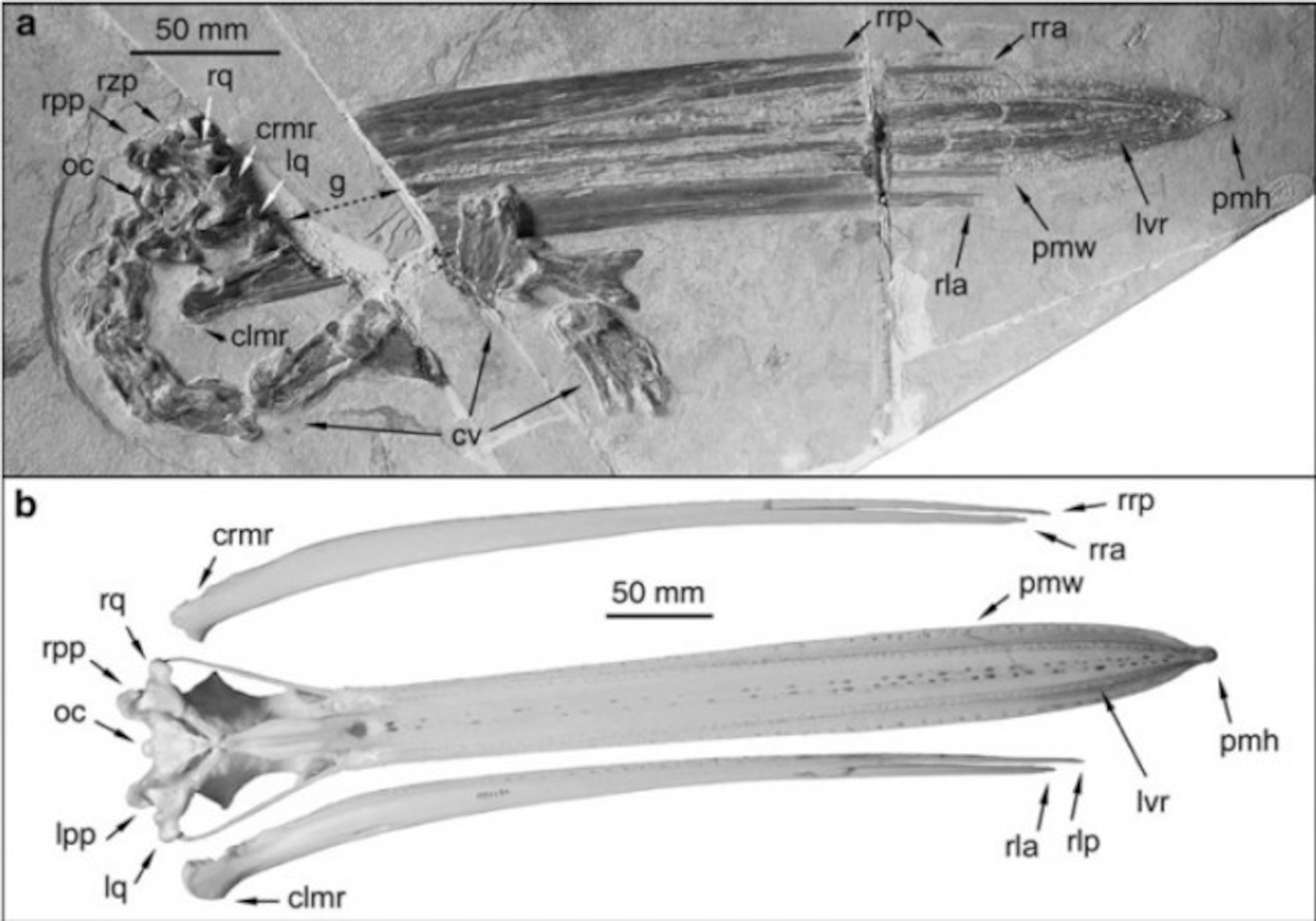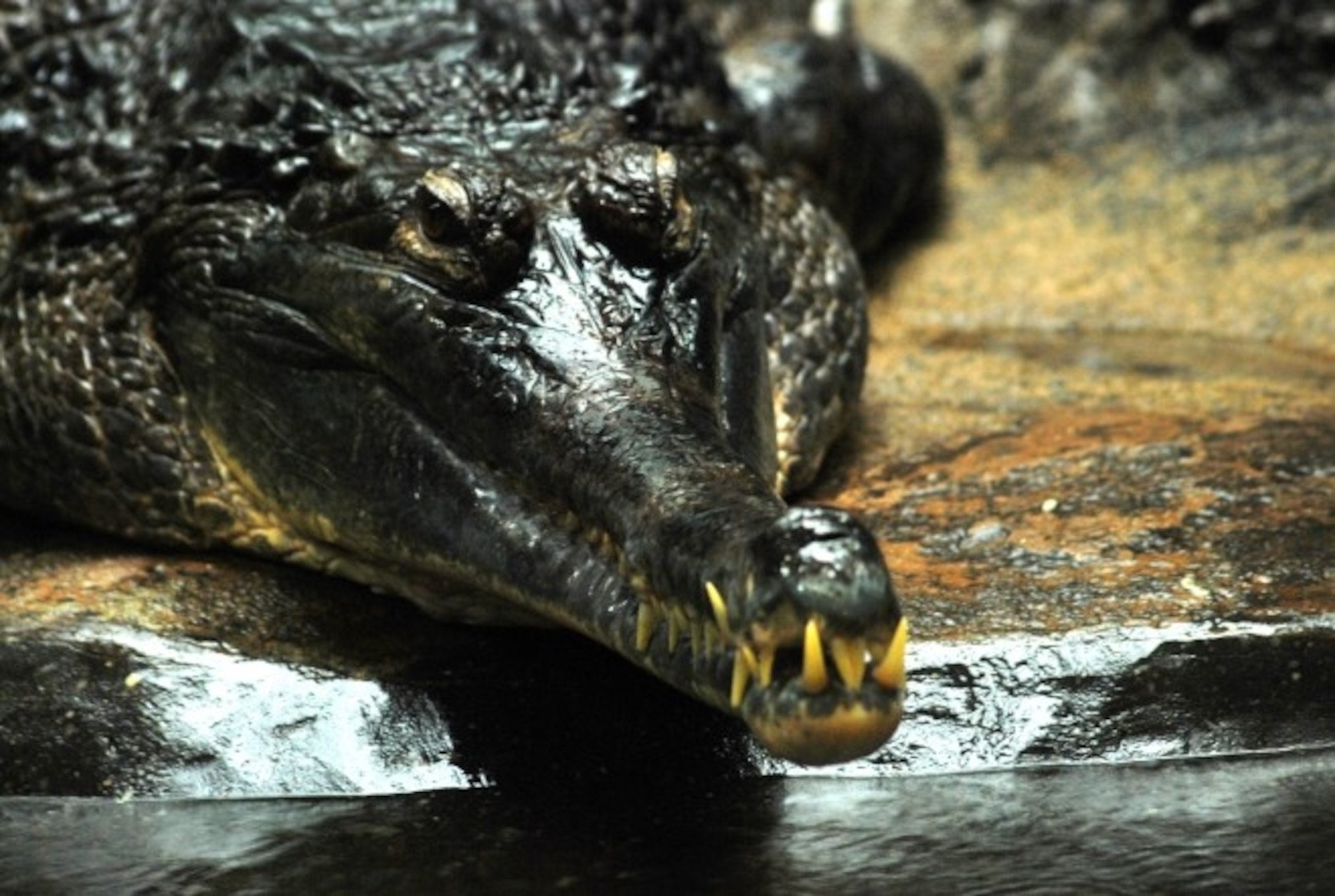I am a relatively infrequent airline traveler, and so packing for distant assignments and trips always presents me with an organizational challenge. Clothes, equipment, and supplies must be tracked down and stuffed into my cheap luggage, with frequent checks of the TSA website to ensure that I can unpack and repack my carry-ons with a minimum of hassle during my pass through security. As bibliophiles know, though, one of the most crucial aspects of air travel is choosing the right books to take along. I was tempted to bring New Perspectives on Horned Dinosaurs on my recent trip to Montana and Wyoming, but the massive symposium volume would have required an extra suitcase of its own and was probably best left at home. I settled for a few cherished paperbacks instead, including George Gaylord Simpson’s posthumously-published sci-fi yarn The Dechronization of Sam Magruder.
Simpson was not a regular author of fiction. As one of the 20th century’s most influential paleontologists, he spent his professional career asking questions about life’s history and his work was pivotal in merging the search for old bones with the intricacies of evolutionary theory. Given his scientific background, it is hardly surprising that Simpson’s novella – told in the fashion of H.G. Wells’ The Time Machine – features a scientist by the name of Sam Magruder who accidentally sends himself back to the dinosaur-haunted Cretaceous of North America. Rather than follow Magruder directly, though, Simpson tells his story through a set of chiseled stone tablets that the time-tossed scientist left behind. By the time a clique of modern academics learns of Magruder’s story, he has been dead for over 65 million years.
Magruder’s Mesozoic account was colored by Simpson’s own views on prehistoric life. Through Magruder’s narrative, Simpson derided the fashionable idea of “hot-blooded dinosaurs” (the long-necked Alamosaurus Magruder encounters is an emerald green creature bound to the swamp), and he also uses an unfortunate run-in with a crocodile to muse upon the notion of evolutionary progress. While still gaining his bearings along the edge of a Cretaceous swamp, Magruder loses a few fingers to a crocodile that had been hiding in the shallows. Much later, when hammering out the encounter in stone, Magruder writes:
It looked, as far as I could see, exactly like crocodiles in zoos in 2162 A.D. There is successful adaptation for you! Already some tens of millions of years before my world of 80,000,000 B.C. crocodiles had evolved, and henceforth to our, I should say your, own day they hardly changed at all.
It has been said by some theorists that cases like that of the crocodile, virtually unchanged for 100 million years and more, represent a failure of the evolutionary force, a blind alley, or a long senescence. As I gazed at my antagonist, it occurred to me how false this is. Here was no failure but an adaptation so successful, so perfect that once developed it has never needed to change.

The persistence of the crocodile turned our cherished beliefs about life’s progress upside down. We believed that our species – only about 200,000 years old, and the only remaining twig of a lineage of hominins that originated a scant 6 million years ago – was the paragon of evolutionary process, yet crocodiles already had a lineage that stretched deep into the Mesozoic when they watched our early ancestors from the shallows. By believing crocodiles to be cordoned off in an evolutionary backwater, scientists had misread the fossil record.
The preoccupation of naturalists with evolutionary progress made it easy to case crocodiles as evolutionary sluggards. In scientific disciplines focused on tracking change, a demonstrable lack of change was pushed aside as uninteresting or uninformative. What could a stagnant group of animals possibly tell us about how life evolves?
In evolution, change is the name of the game, and the fossil record is regularly cast as hard evidence of an upward march of progress in which those lineages that do not change, perish. There are a few exceptions – creatures often called “living fossils” by documentary narrators – but, like the crocodiles, these creatures are often interpreted as occupying a lowly place on the evolutionary tree. Even Charles Darwin, who consciously reminded himself not to use the words “higher” and “lower” in reference to the evolutionary relationships of organisms, could not help but cast prehistoric-looking oddballs such as lungfish as “thin straggling branch[es] springing from a fork low down in a tree.” These lowly creatures owed their existence to the inheritance of a “protected station” – an ecological niche for which there was no strenuous competition – and were looked down upon as organisms which had failed to keep up as organisms around them changed.
For Darwin’s part, it was the perpetual “struggle for existence” that propelled creatures along uncharted evolutionary paths. There was no set end point, but each stage of nature’s constant unfolding pattern could be viewed as superior than what had come before. During an exchange with his friend Joesph Hooker on this point in 1858, Darwin proposed that “species inhabiting a very large area, & therefore existing in large numbers & which have been subjected to the severest competition with many other forms, will have arrived through natural selection, at a higher stage of perfection than the inhabitants of a small area.” Creatures such as the duck-billed platypus, alligator gar, and lungfish were simply vestiges of once more diverse groups, their kin “having been beaten out & exterminated … by more improved forms.”
Darwin later had some misgivings about using “higher” and “lower” as shorthand, but he remained confident that the words were crude approximations of a more intricate evolutionary truth. Thanks to competition, more recently-evolved species were superior to their predecessors, leading Darwin to remark “if the organisms of any area belonging to the Eocene or Secondary periods, were put into competition with those now existing in the same area (or probably in any part of world) they (i.e. the old one) would be beaten hollow and be exterminated.” “[I]f the theory be true,” Darwin told his friend, “this must be so.”
Pelicans would seem to be another group of creatures that evolution has left behind. Although birds have an extensive fossil record – stretching back to the time when the first avians looked little different than some of the feathered dinosaurs they lived alongside – the majority of what we know about them comes from postcranial remains. Their beaks and bills are rarely preserved, but paleontologists were fortunate enough to find a 30 million-year-old pelican from southern France with most of its specialized bill intact. Described by Antoine Louchart, Nicolas Tourment, and Julie Carrier, both the pelican’s bill and its skeleton were little different than those of its living cousins; during the past thirty million years, pelicans have not changed very much at all.

This fossil pelican does not yet have an official name, but Louchart and colleagues designated it as a new, early species of the genus which contains all modern pelicans (Pelecanus). Its bill was proportionally larger than modern pelicans, but otherwise its characteristics fell within the range of what is seen among living pelican species. If it wasn’t ancestral to any living species, it was at the very least a member of the evolutionary stem from which other pelicans radiated.
The existence of a pelican of modern aspect so distant in time confirms that once the highly-distinctive, trapdoor feeding apparatus of pelicans only underwent a minimal amount of change after it evolved. The reason why pelican anatomy should have remained in a holding pattern for such a long time is unclear. Perhaps the characteristics of pelican’s fishy prey have not changed much since the Oligocene, Louchart and co-authors offer, or maybe, once bill and body evolved in pelicans, the requirements of flight restricted the ways in which the bill could have been adapted without sacrificing flight performance.
Regardless of the reason for the long pattern of pelican stasis, however, it remains consistent with evolution by means of natural selection. If pelicans quickly became adapted to a particular niche which has been available over a wide area of the globe for thirty million years, then there was little reason why they should continue to change. Furthermore, if the unique anatomy of their bills placed certain constraints on where they could live and what they could feed upon, this may explain why the unique bill of pelican has not been co-opted into new forms.
Despite how little they have changed, though, it would be foolish to label pelicans as inferior animals that have been left behind by evolution. Today there are at least eight species of pelicans that are found on every continent except Antarctica, and they use their throat pouches to scoop up fish in the same way their Oligocene predecessors did. If we must judge them on evolutionary merit at all (and there is no reason why we should think ourselves to be especially fit arbiters), it is apparent that pelicans are most certainly a long-lived and successful lineage of birds. In a variation of what Stephen Jay Gould called “Life’s Little Joke“, it is only such a young and lonely species that can sneer at lineages which have persisted for so long.
The lesson of the pelican, the horseshoe crab, the coelacanth, and the crocodile is more than just a reminder of the tenuous place in nature our species presently occupies. After musing on the success of the crocodiles, Simpson’s wayward protagonist wonders if the constant generation of short-lived, less-stable forms is what has caused life to take on all its variety. “Is it, perhaps, not the success but the failure of adaptation,” Magruder asks himself, “that has forced evolving life onward to what we, at least, consider higher levels?” The undirected pattern of evolution is not always striving upwards to outdo itself with more-perfect radiations of species. Instability at least partially fuels the twin engines of diversity and disparity, and it may be that the fragile nature of species is what has allowed so many wondrous creatures to evolve.
[Originally posted September 20th, 2010]
Top Image: A false gharial (Tomistoma schlegelii) at the Bronx Zoo. Photo by the author.
References:
Louchart, A., Tourment, N., & Carrier, J. (2010). The earliest known pelican reveals 30 million years of evolutionary stasis in beak morphology Journal of Ornithology DOI: 10.1007/s10336-010-0537-5

